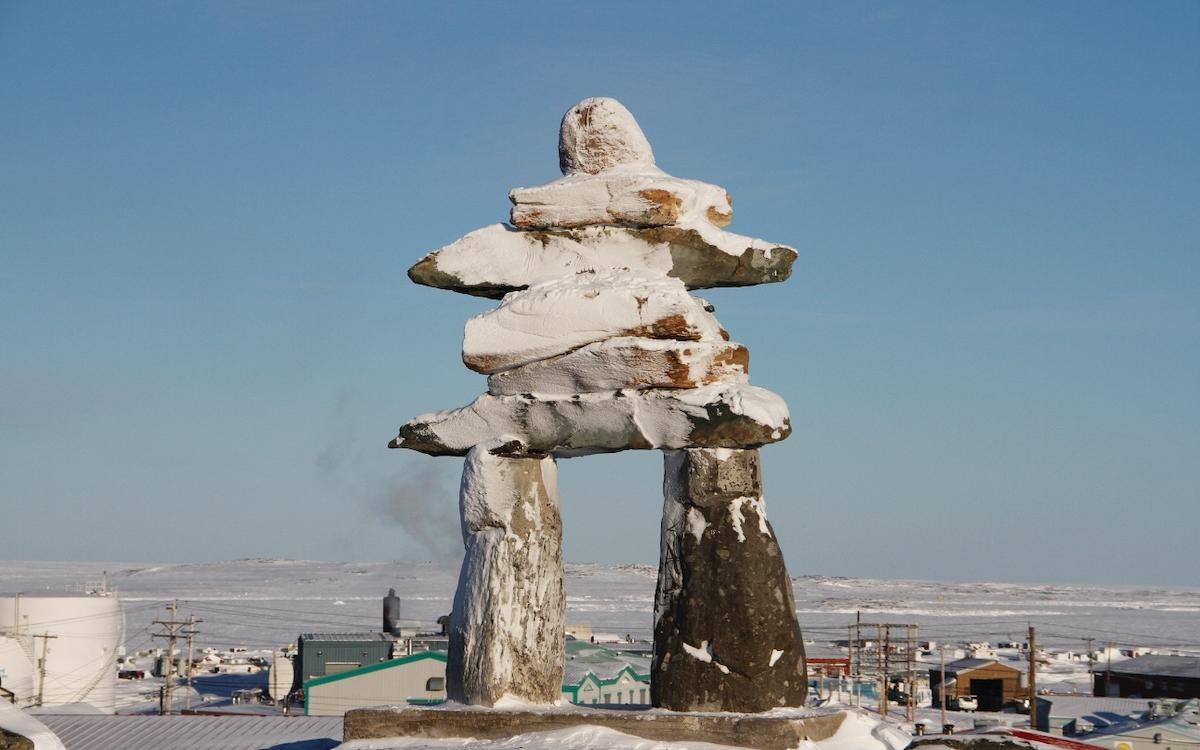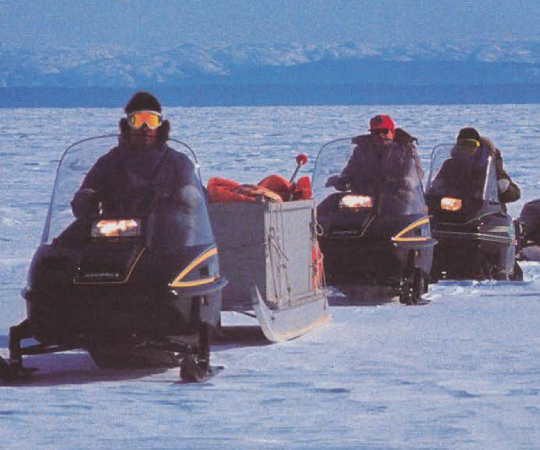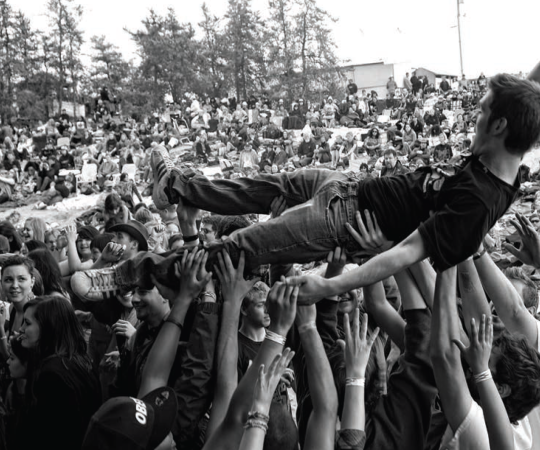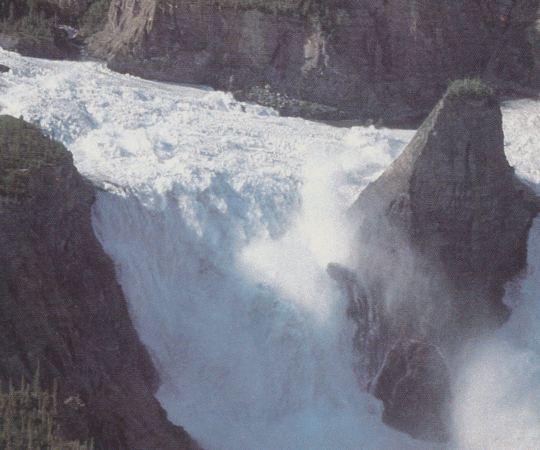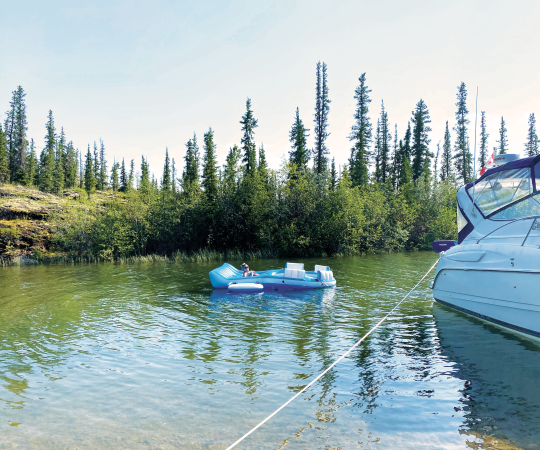Rankin Inlet is cool. Literally. Located on Hudson Bay between Chesterfield Inlet and Whale Cove, it’s one of the largest communities in Nunavut, with a population hovering at just under 3,000 people, and acts as the gateway to the Kivalliq region. But it’s also physically very, very cold. In 1995, when Iqaluit was chosen over Rankin as the new Nunavut capital, local legend has it that Rankin’s notorious bad weather— which can make flying in and out of the community an adventure—was part of the decision.
“If you were to Google it and look up an Expedia review, Rankin is voted number one most miserable winter in Canada,” jokes Atuat Shouldice.
Shouldice grew up in Rankin and helps guide visitors around the community his family has lived in for generations. “When I bring people on tours I usually use myself as an example. How my family came to be in Rankin, where my grandparents lived,” he says.
His family’s history follows the history of the community. Known in Inuktitut as Kangiqtiniq, or ‘deep inlet,’ people have lived in this area for thousands of years, drawn to the rivers teeming with Arctic char and yearly caribou migration. When Europeans first arrived it was as whalers and trappers, before nickel was discovered in the early 1950s and the North Rankin Nickel mine established the current town site.
From 1957, the mine produced nickel and copper ores and employed some of the first Inuit miners in Canada. Work stopped in 1962 but the mining history continues—in 2019 Agnico-Eagle opened the Meliadine Gold Mine about 20 kilometres outside of town. Visitors can still see this history today, from ‘the elephants’ (aging mine equipment Shouldice used as a childhood playground), to historical sites and wildlife roaming the land.
“We have a ton of wildlife; polar bears, beluga whales, a large caribou migration,” says Shouldice. Breakup of sea ice usually occurs in July, freezing back over in October. For the best wildlife viewing, he recommends visitors come between April and October.
“The weather’s a little more mild, a lot of the migration starts with birds, caribou, there’s a lot more daylight. But anything from September through November you get a lot of aurora.”
But there’s no need to fear the winter. In fact, there’s something to be said for experiencing a Kivilliq winter, where temperatures can fall to –50C.
“Our temperature in January is really unique where it hits –40 a lot. A lot of other places you get around those temperatures for a day here, a day there, whereas it’s consistent here for a good few weeks where it stays that cold,” says Shouldice. “If you’re not dressed well, it really hurts, but the sunsets, the sunrises, have a different effect too with the crystals in the air, sparkling. It’s like living in a snow globe.”

Despite its large size (for Nunavut), Rankin is still physically isolated, with no roads currently connecting it to the south. Drive out of town for five minutes and you’re on the tundra, in a surreal landscape of rolling snow in winter and blooming colour in the summer. Arctic waters are on one side and treeless landscapes stretch to the horizon on the other. It’s what makes the aurora and milky way viewing in Rankin so incredible. The darkness is near-total as soon as you step away from streetlights and houses. That’s how Shouldice spends many an evening—photographing the sky—when he’s not shuttling his kids to hockey practice.
Because, oh yeah, come for the natural wonder, but stay for the hockey. Home of Jordin Tootoo, the first Inuk NHL player, hockey is serious business in Rankin. Stop by
almost any time of day at the brand- new arena and you’ll find a game or a practice going on. “I don’t know if I remember anything that nice. You walk in there now and the kids play hockey and sweat instead of getting frostbite.”
No word yet if the best spring rolls in the Arctic, which used to be served at the old arena, will be mak- ing the migration to the new facility. Otherwise, if you want a real taste of Rankin, Shouldice says your best bet is to make some new friends.
“There’s a couple of restaurants here, but if you want an authentic meal, talk to the people you’re work- ing with or talk to the people you set up with and maybe you’ll get lucky and eat with a family and have a caribou meal or Arctic char meal.”
DAY 1
Hit up the visitor’s centre near the airport. They have loads of information about the history of the region and can help connect you to locals. Head to the centre of town and take a selfie with the giant inuksuk. Designed by Joe Nattar, the 15-foot-tall structure has kept a watchful eye over the community since 1991. Stroll by the water and watch ships loading in and out. Check out Johnston’s Cove and walk onto the jetty to see tides around 13 feet high, or watch the ice floes during freezeup and breakup. If you’re lucky, you may even see hunters returning with beluga and get a chance to taste maktaaq (whale blubber). If you’ve still got some time in the day, journey to Iqalugaarjuup Nunanga Territorial Park; home to remains of ancient cultures and a great place to experience some Inuit history. Cap the day off by playing some darts at the Legion. You’ll need to be signed in by a member if you’re not one already, but once you’re in it’s a great place to talk to local Nunavummiut.
DAY 2
Time to check out some art. After the first mine closed, a ceramics studio was tried in the 1960s and it left its mark. The Matchbox Gallery is a great place for souvenirs, as is Ivalu, the local arts and crafts centre. Then, see if you can spot an iglu. If you’ve come in the winter months, there’s almost always an iglu somewhere in town, either constructed by elders in front of their homes or a large one just outside of town built as a community site. Catch your own dinner by casting a line in either the Meliadine or the Diane River, both favourite fishing spots. Or head over to Kivalliq Arctic Foods to pick up some caribou jerky or candied char. Finish your visit with a cone at the Red Top Variety Shop. Some say this may be the best soft-serve ice cream in the Arctic. Judge for yourself, but it’s pretty solid, even at –50C.

